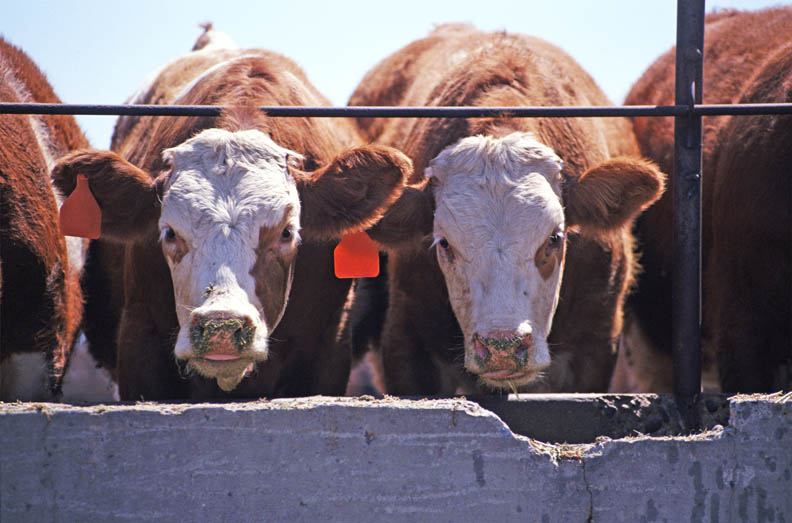
It’s not going to take over the entire beef industry, but grass-fed beef production is certainly catering to consumers who are wanting meat products directly from the farm.This is a growing aspect of the beef cattle market and producers are wanting more information about how to get into this business and be profitable, according to speakers at a Texas AgriLife conference.Grass-fed is value-added. "Direct sales to consumers, suppliers or both? You need to identify your goal and above all, you’ve got to have a plan,” one speaker said.
June 21, 2012

One by one, they had questions and lots of them. A roomful of grass-fed beef producers came to Texas A&M University in College Station recently to learn more about an emerging aspect of beef production that continues to steadily gain momentum.
“It’s not going to take over the entire beef industry, but grass-fed beef production is certainly catering to consumers who are wanting meat products directly from the farm,” said Dr. Rick Machen, Texas AgriLife Extension Service beef cattle specialist from Uvalde and conference coordinator. “There’s an ever-growing segment of consumers interested in natural products, organic products and grass-fed products. Our primary focus here is to outline how we produce grass-fed beef.”
The conference, the second of its kind conducted by AgriLife Extension, drew more than 50 participants, and feedback indicated strong desire for another workshop next year, Machen said. “This is a growing aspect of the beef cattle market and producers are wanting more information about how to get into this business and be profitable.”
Grass-fed beef has at least three definitions, but essentially it is meat from cattle that have been fed from birth to harvest on grass, legumes and forages without the use of any grains.
Traditional marketing
Mac Young, AgriLife Extension economist, said beef producers traditionally have marketing options such as a sale barn, private treaty or value-added.
“Grass-fed is value-added,” he told attendees. “Direct sales to consumers, suppliers or both? You need to identify your goal and above all, you’ve got to have a plan.”
Young said it is important for grass-fed producers to plan out what they are trying to do with their operation and what they want to accomplish.
“Any new venture is risky, and any change to your existing operation is risky,” he said.
Young said producers should consider if they have enough capital to enter or expand into the grass-fed business. Sustainability and profitability are other important issues to consider.
“You need to project out and see if you are going to have enough to cover all of your costs,” he said. “Review the resources you have with regards to capital, labor, herd numbers and forage. You need to also ask will you have enough volume to cover your expenses?”
Gene Sollock from Iola has been in the grass-fed beef business for 15 years. His operation consists of 91 acres, and he sells his grass-fed cattle to a buyer from Burton, who “has them sold over the telephone before they are finished out.”
“We are growing them out to about 800 to 900 pounds,” said Sollock, who receives payment based on dressed, hanging weight.
Clover pasture
Sollock said he uses no commercial fertilizer and grazes the cattle on ball clover established 20 years ago.
“We have 40 different paddocks that are about 2 acres in size,” he said. “We move those cattle into knee-deep forage where they graze about two days. But you’ve got to have rain.”
Mark Muncer, a grass-fed beef producer from South Africa, said his operation finishes cattle at about 990 pounds, with dressed carcass weight at approximately 550 pounds.
Since there is not an established market for grass-fed beef, there are premiums for grass-fed beef on top of the already historically high cattle prices, according to the producer panel.
Charlie Bradbury, chief executive officer of Nolan Ryan’s Beef, told attendees the company has just begun marketing a grass-fed line of beef.
'Brand and sell'
“We don’t own any cattle,” Bradbury said. “We buy beef from producers that meets our specifications, then brand it and sell it.”
Bradbury said consumers want to know where their food, including beef, comes from, how it is raised and what it has been fed. Currently, the company is processing approximately 48 head a week in Nebraska, then shipping to a plant in Dallas where primal cuts are made and packaged with the Nolan Ryan brand.
Ground beef, rib-eye steaks, tenderloin filets and chuck roasts are the main cuts marketed by Kroger. The beef is marketed in about 80 stores and demand has been steady, Bradbury said.
He said Kroger eventually would like to have the grass-fed line of beef in all of its stores, but “our biggest problem is supply.”
That encouraged attendees who were looking to go back home with new ideas to implement into their operations, they said.
“The discussions of nutrition were really interesting, particularly as the cattle mature and their needs change,” Muncer said. “Value-adding is critical in this aspect of the business and you have to adjust your production methods accordingly.”
You May Also Like



